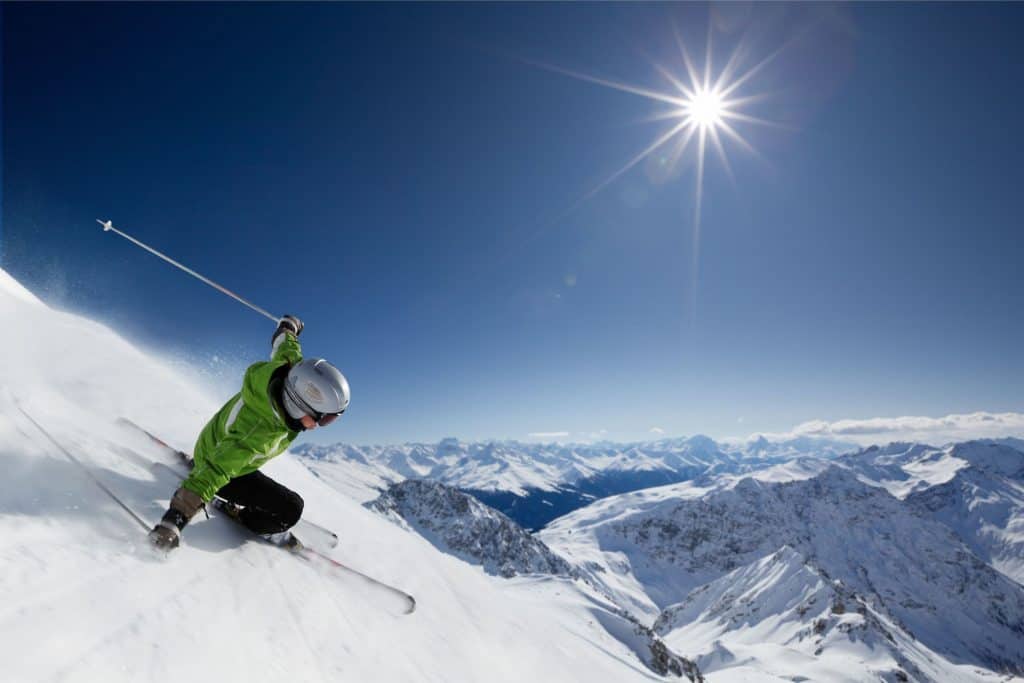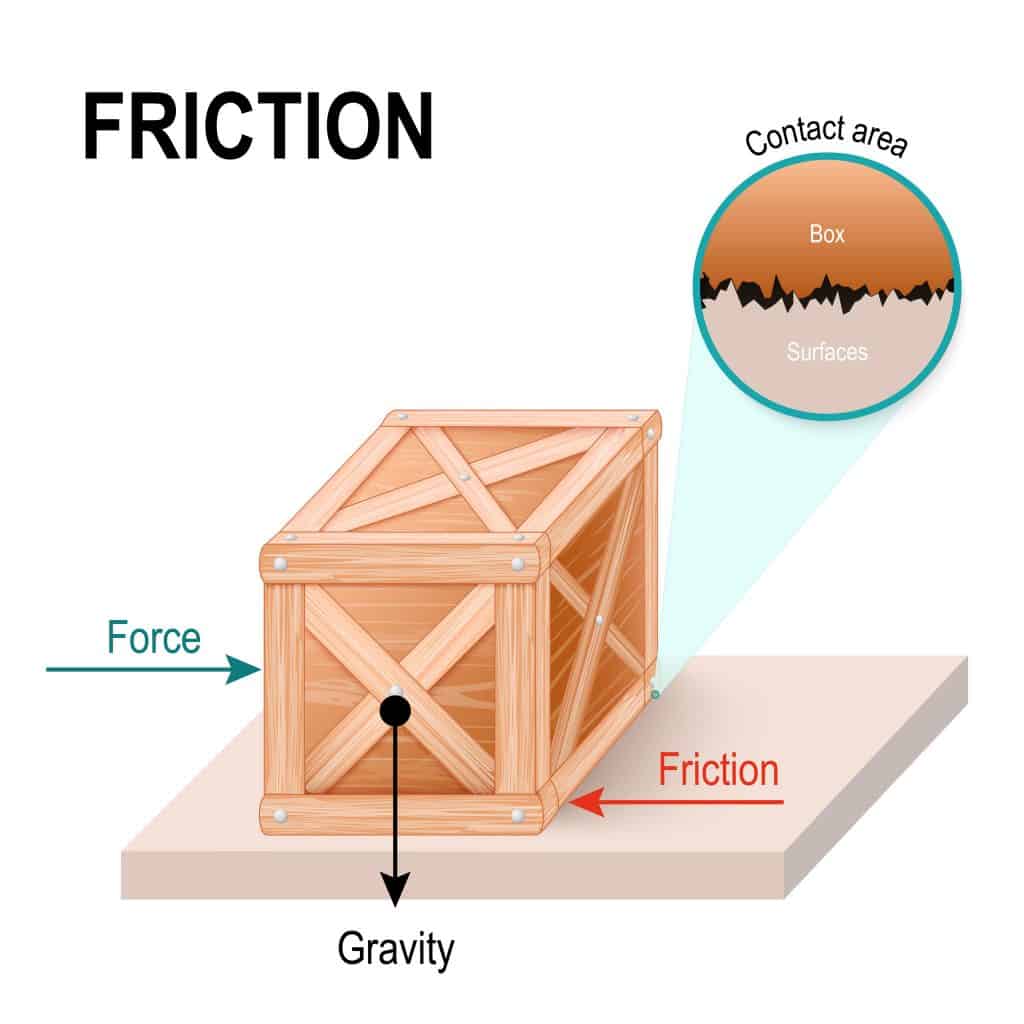
There is surprisingly a great deal of physics involved in sledding, skiing, and snow sports in general. I am no Einstein, but I have often wondered what even makes sledding and skiing possible?
Friction is an integral part of sledding and skiing. It determines how fast one will go, based upon how much resistance is created as the sled/skis rub against the snow. As skis or sled move across the snow they create friction, thus causing the snow to melt and become slippery.
We have just scratched the surface when it comes to frictions role in sledding and skiing! There are so many other things that affect friction. Once you are done reading this article, you will never look at skiing or sledding the same.
Friction in Sledding and Skiing
Trust me, you don’t need to be a rocket scientist or physicist to understand how physics (namely friction) affects sledding and skiing! If you are anything like me, topics such as friction, gravity, or basically anything that relates to Sir Isaac Newtown can be difficult to grasp. So let’s go back to our elementary school days and see if we can refresh our knowledge on friction and how it works.
Put simply, friction is the force that two surfaces exert on each other as they rub against each other. In terms of sledding, friction occurs as the sled moves across the snow, thus causing resistance.
The rougher a surface is, the more resistance or friction occurs. For example, imagine trying to ski down a grassy hill that has no snow. First of all, you will notice that you won’t move anywhere (at least not on your skis!). This is because both the surfaces that are rubbing against each other are too rough, thus causing extreme friction and resistance.
To put it in another way, the roughness of the grass gets caught on the skis which make the hill more “frictiony” and less slippery. This particular type of friction is called static friction. Static friction occurs when there is so great of a resistant force between two objects that it prevents them from moving (much like trying to sled down a concrete ramp).
The smoother the two surfaces are that are rubbing against each other, the less friction or resistance exists. This is exactly what happens in sledding and skiing! If you look at the bottom of a sled, you will notice that it is super smooth. It’s almost glossy This smoothness is what allows it to glide across snow which is also smooth.
This is especially true when applied to skiing.
You will notice that ski runs at resorts are normally groomed and flattened. The reason that they are groomed and flattened is to reduce the amount of friction that is occurring between the snow and the skis. The same goes for tubing parks who groom their tubing runs.
You may also notice that it is much more effective to pack the snow down on a hill before you go sledding. Doing this smoothens the surface and makes your ride a lot smoother and faster.
A Closer Look
Let’s take it a step further. The reason why sledding and skiing even work in the first place has to do with the energy that is released by friction. As the bottom of your skis or your sled rubs against the snow, it releases energy in the form of heat. This heat, in turn, melts the snow, creating a thin layer of water between your sled and the snow. This layer of water further reduces friction/resistance and allows you to glide easily across the snow.
There is a name for the type of friction that comes into play when you are sledding. Kinetic or fluid friction is what occurs when the resistance is decreased to the point that objects can freely move across each other.
Summing Friction Up
- Friction is the resistance that occurs when two objects move across each other (a sled moving across the snow).
- The more friction, the harder it is for objects to slide across each other (trying to ski down a concrete hill), thus causing static friction.
- The less friction, the easier it is for objects to slide across each other (skiing on a freshly groomed slope), thus causing kinetic friction.
- Skiing and sledding reduce friction and resistance by melting the snow as the two surfaces rub against each other, thus causing fluid friction.

Hopefully, this crash course gets us on the same boat, or should I say the same sled? Friction is what helps make sledding and skiing fun.
Do You Want More Friction or Less Friction When Sledding and Skiing?
Any way that you look at it, there is always going to be some amount of friction when you are skiing or sledding. Thank goodness for this!
If there was no friction, you would be sliding out of control with absolutely no way to stop. On the other hand, too much friction can be detrimental to skiing and sledding, making it impossible to even move.
The key to sledding and skiing is to find that happy medium where your gear and the snow surface you ski/sled on doesn’t provide too much or too little friction. You’d be surprised how much thought is put into the types of design and material that are put into each sled and ski.
There are different types of skis and sleds for different styles of riding. For example, if you are looking for a fast (least amount of friction) type of skis, you’ll most likely go with ones that are designed for downhill alpine skiing. These skis are specially designed to reduce the amount of resistance making it easier to slide down a hill.
On the other hand, if you are new to skiing and want a slower and more controllable ride, you will get skis that produce more friction, thus making it easier to stop and reduce the speed you can go. This same principle can be applied to sledding.
Other Factors that Affect Friction
Steepness/Grade of the Hill
It can be argued that gravity is the most important force in skiing and sledding. Without gravity, these winter sports would be impossible. Gravity is what accelerates us to the bottom of a hill. The steeper the hill, the greater the gravity.
Friction and gravity go hand in hand. Gravity is what accelerates us and friction is what ultimately slows us down when we are sledding or skiing. As we reach the bottom of a hill we lose acceleration and gravity decreases, thus bringing us to a stop.
The Weight of the Rider
In this instance, the weight of the rider can be looked at as mass. Mass also plays an essential role in friction when it comes to sledding and skiing. The more mass you have the greater the pressure and weight is exerted on the snow. This basically means that there is an increase in kinetic friction. More mass can also give you a faster ride to the bottom of the hill.
The Type of Snow
Snow, being one of the two objects that are moving against each other, greatly affects how much friction and resistance is occurring.
As mentioned earlier, the smoother and more packed the snow is, the less friction and resistance there is. In addition to that, wetter and heavier snow tends to provide a less “frictiony” ride. Wet snow is the type of snow that melts easier as pressure is exerted on it, thus creating fluid friction.
If the Skis or Sled is Waxed on the Bottom
Ever wondered why skis and sometimes even sleds are waxed on the bottom? The answer is simple. Wax provides an even smoother surface than the normal bottom of the sled or skis.
Wax greatly reduces the amount of friction that happens as the snow and skis/sled slide against each other.
Visit our Winter/Snow Page for More Great Content!
Conclusion
As I said, you don’t have to be Einstein to understand and appreciate the physics that go into skiing and sledding! All you need to know is that friction, gravity, and mass all play a huge roll in catapulting you down a snow-covered hill.
